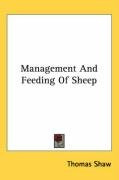feeding farm animals

Purchase of this book includes free trial access to www.million-books.com where you can read more than a million books for free. This is an OCR edition with typos. Excerpt from book: CHAPTER III PRINCIPLES THAT GOVERN SELECTING FOODS In selecting foods for feeding farm animals, for whatsoever purpose they may be kept, certain principles should be observed which have the strength of law. Prominent among these are the following: (i) The aim should be to choose foods so that they may be fed in approximate equilibrium as to their constituents; (2) the equilibrium or balance in foods varies much with the class of animals to which they are fed, with the age of the animals in the same class, and with the object sought from feeding them; (3) under some conditions it may be more profitable to feed foods out of balance than in equilibrium as to their constituents; (4) the chemical analysis of a food is not in itself a complete measure of its value for feeding; (5) when choosing foods a due regard must be had to the proportion of bulk or concentration in the same with reference to the end sought from feeding them in order to obtain the best results; (6) succulent foods are more favorable to milk production than those of similar analysis as to nutrients, but lacking in succulence; (7) variety in foods will produce returns more satisfactory than will those of similar analysis, but lacking in variety when fed for long periods; (8) the value of foods is influenced by the nutrients they contain, by the condition of the nutrients as to digestibility, by the influence which they exert on development and production, and by the fertility which they furnish. Equilibrium in foods.Equilibrium in foods means the possession of nutrients in such proportion as are necessary to meet the needs of the animals to which they arefed. The chief food elements in foods are known as protein, carbohydrates, ether extract and ash. They also contain more or less water according to the kind...
Users who have this book
Users who want this book
What readers are saying
What do you think? Write your own comment on this book!
write a commentGenre
if you like feeding farm animals try:
Do you want to read a book that interests you? It’s EASY!
Create an account and send a request for reading to other users on the Webpage of the book!









